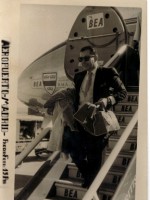Robert F. Boyle is a Actor and Other American born on 10 october 1909 at Los Angeles (USA)
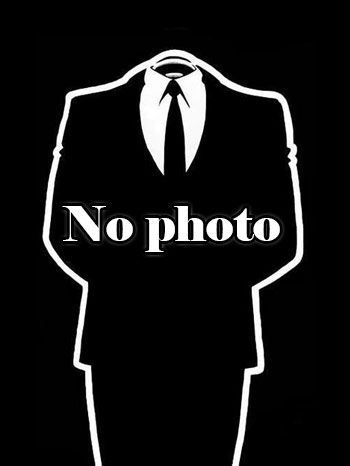
Robert Francis Boyle (October 10, 1909 – August 1, 2010) was an American film art director and production designer.
Born in Los Angeles, Boyle trained as an architect, graduating from the University of Southern California (USC). When he lost his job in that field during the Great Depression, Boyle found work in films as an extra. In 1933 he was hired as a draftsman in the Paramount Pictures art department, headed by supervising art director Hans Dreier. Beginning with Cecil B. DeMille's The Plainsman, Boyle went on to work on a variety of pictures as a sketch artist, draftsman and assistant art director before becoming an art director at Universal Studios in the early 1940s.
Boyle collaborated several times with Alfred Hitchcock, first as an associate art director for Saboteur (1942) and later as a full-fledged production designer for North by Northwest (1959), The Birds (1963), and Marnie (1964). Denied permission to shoot footage on Mount Rushmore, Hitchcock turned to Boyle to create realistic replicas of the stone heads. Boyle abseiled down the monument, photographing its contours in detail, before constructing “just enough to put the actors on so we could get down shots, up shots, side shots, whatever we needed.” Almost two decades earlier, Boyle had delivered the Statue of Liberty reproduction that was used in the climactic scene of Saboteur. For The Birds, Boyle was put in charge of the title characters. He later recalled, “We needed to find out which birds we could use best, and finally settled on two types: sea gulls, which were very greedy beasts that would always fly toward the camera if there was a piece of meat, and crows, which had a strange sort of intelligence.” Boyle described his relationship with Hitchcock: “It was a meeting of equals: the director who knew exactly what he wanted, and the art director who knew how to get it done."
When director Norman Jewison failed in his attempts to get the necessary submarine that was at the center of his The Russians Are Coming, the Russians Are Coming storyline, Boyle built a working model from styrofoam and fiberglass.
Boyle's other credits include It Came from Outer Space, Cape Fear, In Cold Blood, Fiddler on the Roof, Portnoy's Complaint, Winter Kills, Mame, W.C. Fields and Me, The Shootist, Private Benjamin, Staying Alive, and Troop Beverly Hills.
During the course of his career, Boyle was nominated four times for the Academy Award for Best Art Direction but never won. In 1997 he received the Art Directors Guild's Lifetime Achievement Award, and he was voted an Honorary Academy Award by the Board of Governors of the Academy of Motion Picture Arts and Sciences, "in recognition of one of cinema's great careers in art direction," which he received during the 80th Academy Awards ceremony on February 24, 2008. At the age of 98, Boyle became the oldest winner ever of an Honorary Award in the history of the Academy Awards. Despite being in ill health and arriving to the ceremony in a wheelchair, Boyle insisted on walking onstage, alongside Nicole Kidman, to receive the honor.
Boyle was the subject of the Academy Award-nominated documentary short The Man on Lincoln's Nose (2000).
Boyle died on August 1, 2010 in Los Angeles from natural causes.
Boyle a collaboré plusieurs fois avec Alfred Hitchcock, tout d'abord comme directeur artistique associé pour Cinquième Colonne (1942), et plus tard comme décorateur à part entière pour La Mort aux trousses (1959), Les Oiseaux (1963) et Pas de printemps pour Marnie (1964).
Les autres contributions de Boyle incluent Le Météore de la nuit, Les Nerfs à vif, De sang-froid, Un violon sur le toit, Portnoy et son complexe, Winter Kills, Mame, Fields et moi, Le Dernier des géants, la Bidasse, Staying Alive, Deux nigauds détectives, Deux nigauds chez Vénus, Deux nigauds en Alaska et Troop Beverly Hills .
Pendant toute sa carrière, Boyle a été nommé quatre fois pour l'Oscar de la meilleure direction artistique, mais il ne l'a jamais remporté. En 1997, il reçoit une récompense de la Guilde de la direction artistique pour l'ensemble de sa carrière. et les membres de l'Académie des arts et des sciences du cinéma lui décernent l'Oscar d'honneur "en reconnaissance d'une des carrières cinématographiques les plus importantes dans le domaine de la direction artistique". Il le reçoit le 24 février 2008, pour la quatre-vingtième cérémonie des Oscars. À l'âge de 98 ans, Boyle est devenu le doyen des lauréats de cette récompense dans l'histoire des Oscars.
Boyle fut le sujet d'un documentaire sur les nommés aux Oscars dans le court-métrageThe Man on Lincoln's Nose (2000.
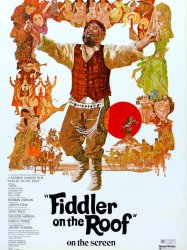 (1971)
(1971)
(Production Design) (1980)
(1980)
(Production Design) (1987)
(1987)
(Production Design) (1983)
(1983)
(Production Design) (1968)
(1968)
(Art Direction) (1959)
(1959)
(Production Design)
Source : Wikidata
Robert F. Boyle

- Infos
- Photos
- Best films
- Family
- Characters
- Awards
Birth name Robert Francis Boyle
Nationality USA
Birth 10 october 1909 at Los Angeles (USA)
Death 1 august 2010 (at 100 years) at Los Angeles (USA)
Nationality USA
Birth 10 october 1909 at Los Angeles (USA)
Death 1 august 2010 (at 100 years) at Los Angeles (USA)
Born in Los Angeles, Boyle trained as an architect, graduating from the University of Southern California (USC). When he lost his job in that field during the Great Depression, Boyle found work in films as an extra. In 1933 he was hired as a draftsman in the Paramount Pictures art department, headed by supervising art director Hans Dreier. Beginning with Cecil B. DeMille's The Plainsman, Boyle went on to work on a variety of pictures as a sketch artist, draftsman and assistant art director before becoming an art director at Universal Studios in the early 1940s.
Boyle collaborated several times with Alfred Hitchcock, first as an associate art director for Saboteur (1942) and later as a full-fledged production designer for North by Northwest (1959), The Birds (1963), and Marnie (1964). Denied permission to shoot footage on Mount Rushmore, Hitchcock turned to Boyle to create realistic replicas of the stone heads. Boyle abseiled down the monument, photographing its contours in detail, before constructing “just enough to put the actors on so we could get down shots, up shots, side shots, whatever we needed.” Almost two decades earlier, Boyle had delivered the Statue of Liberty reproduction that was used in the climactic scene of Saboteur. For The Birds, Boyle was put in charge of the title characters. He later recalled, “We needed to find out which birds we could use best, and finally settled on two types: sea gulls, which were very greedy beasts that would always fly toward the camera if there was a piece of meat, and crows, which had a strange sort of intelligence.” Boyle described his relationship with Hitchcock: “It was a meeting of equals: the director who knew exactly what he wanted, and the art director who knew how to get it done."
When director Norman Jewison failed in his attempts to get the necessary submarine that was at the center of his The Russians Are Coming, the Russians Are Coming storyline, Boyle built a working model from styrofoam and fiberglass.
Boyle's other credits include It Came from Outer Space, Cape Fear, In Cold Blood, Fiddler on the Roof, Portnoy's Complaint, Winter Kills, Mame, W.C. Fields and Me, The Shootist, Private Benjamin, Staying Alive, and Troop Beverly Hills.
During the course of his career, Boyle was nominated four times for the Academy Award for Best Art Direction but never won. In 1997 he received the Art Directors Guild's Lifetime Achievement Award, and he was voted an Honorary Academy Award by the Board of Governors of the Academy of Motion Picture Arts and Sciences, "in recognition of one of cinema's great careers in art direction," which he received during the 80th Academy Awards ceremony on February 24, 2008. At the age of 98, Boyle became the oldest winner ever of an Honorary Award in the history of the Academy Awards. Despite being in ill health and arriving to the ceremony in a wheelchair, Boyle insisted on walking onstage, alongside Nicole Kidman, to receive the honor.
Boyle was the subject of the Academy Award-nominated documentary short The Man on Lincoln's Nose (2000).
Boyle died on August 1, 2010 in Los Angeles from natural causes.
Biography
Né à Los Angeles, Boyle a une formation d'architecte, diplômé de l'Université de la Californie du Sud (USC). Lorsqu'il perd son emploi durant la Grande Dépression, Boyle trouve un emploi de figurant dans l'industrie cinématographique. En 1933, il est embauché comme dessinateur dans le département d'art de Paramount Pictures, supervisé par le directeur artistique Hans Dreier. Il travaille sur une variété d'images en tant que croqueur, dessinateur et assistant de directeur artistique, avant de devenir directeur artistique aux Studios Universal au début des années 1940.Boyle a collaboré plusieurs fois avec Alfred Hitchcock, tout d'abord comme directeur artistique associé pour Cinquième Colonne (1942), et plus tard comme décorateur à part entière pour La Mort aux trousses (1959), Les Oiseaux (1963) et Pas de printemps pour Marnie (1964).
Les autres contributions de Boyle incluent Le Météore de la nuit, Les Nerfs à vif, De sang-froid, Un violon sur le toit, Portnoy et son complexe, Winter Kills, Mame, Fields et moi, Le Dernier des géants, la Bidasse, Staying Alive, Deux nigauds détectives, Deux nigauds chez Vénus, Deux nigauds en Alaska et Troop Beverly Hills .
Pendant toute sa carrière, Boyle a été nommé quatre fois pour l'Oscar de la meilleure direction artistique, mais il ne l'a jamais remporté. En 1997, il reçoit une récompense de la Guilde de la direction artistique pour l'ensemble de sa carrière. et les membres de l'Académie des arts et des sciences du cinéma lui décernent l'Oscar d'honneur "en reconnaissance d'une des carrières cinématographiques les plus importantes dans le domaine de la direction artistique". Il le reçoit le 24 février 2008, pour la quatre-vingtième cérémonie des Oscars. À l'âge de 98 ans, Boyle est devenu le doyen des lauréats de cette récompense dans l'histoire des Oscars.
Boyle fut le sujet d'un documentaire sur les nommés aux Oscars dans le court-métrageThe Man on Lincoln's Nose (2000.
Best films
 (1971)
(1971)(Production Design)
 (1980)
(1980)(Production Design)
 (1987)
(1987)(Production Design)
 (1983)
(1983)(Production Design)
 (1968)
(1968)(Art Direction)
 (1959)
(1959)(Production Design)
Usually with
Filmography of Robert F. Boyle (74 films)
Actor
 , 40minutes
, 40minutesDirected by Peter Fitzgerald
Origin USA
Genres Documentary
Actors Eva Marie Saint, Patricia Hitchcock, Ernest Lehman, Robert F. Boyle, Martin Landau, Alfred Hitchcock
Roles Self
Rating71%





Secrets de tournage du film d'Alfred Hitchcock de 1959 "La Mort aux trousses" ('North by Northwest').
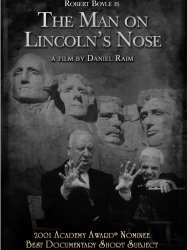
The Man on Lincoln's Nose (2000)
Origin USA
Genres Documentary
Themes Documentary films about business, Documentary films about the film industry, Documentary films about cities
Actors Robert F. Boyle, Lloyd Henry Bumstead, Norman Jewison, Harold Michelson, Walter Mirisch
Roles Himself
Rating82%





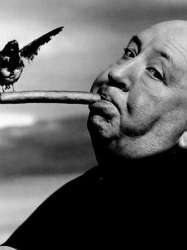 , 1h41
, 1h41Origin USA
Genres Documentary
Themes Documentaire sur une personnalité
Actors Kevin Spacey, Tippi Hedren, Janet Leigh, Patricia Hitchcock, Rod Taylor, Veronica Cartwright
Roles lui-même
Rating78%





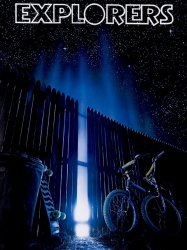
Explorers (1985)
, 1h49Directed by Joe Dante
Origin USA
Genres Science fiction, Fantasy, Adventure, Romance, Comic science fiction
Themes L'adolescence, Films about education, Films about children, Space adventure films, Comedy science fiction films, Space opera, Children's films, Films about school violence
Actors Ethan Hawke, River Phoenix, James Cromwell, Amanda Peterson, Bobby Fite, Danny Nucci
Roles Starkiller's Girlfriend's Father
Rating63%





Ben Crandall (Ethan Hawke) experiences vivid dreams about flying through clouds and over a vast, city-like circuit board...usually after falling asleep watching old sci-fi movies (War of the Worlds is a favorite). Every night, upon waking from the dream, he draws the circuit board. Ben shows the sketches to his friend Wolfgang Muller (River Phoenix), a child prodigy. At school, Ben develops a crush on Lori Swenson (Amanda Peterson) - but he isn't sure whether it's mutual. Both boys meet punkish-but-likeable Darren Woods (Jason Presson), with whom they share their circuit board-concepts. Wolfgang builds an actual microchip based on Ben's drawings. The chip enables the generation of an electromagnetic bubble which surrounds a pre-determined area. As the boys discover, said bubble is capable of moving at near-limitless distances and speeds without the usual ill-effects from inertia. They construct a rudimentary spacecraft out of an abandoned tilt-a-whirl seat; they name their ship the Thunder Road, after Bruce Springsteen's song of the same title. Their experiments with the Thunder Road draw attention from the US Government, which sends agents to scout the area for unidentified flying objects.
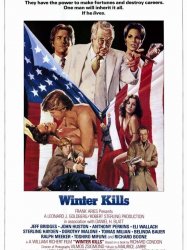
Winter Kills (1979)
, 1h37Directed by William Richert
Origin USA
Genres Drama, Thriller, Comedy, Comedy-drama
Themes Political films
Actors Jeff Bridges, John Huston, Anthony Perkins, Eli Wallach, Sterling Hayden, Dorothy Malone
Roles Desk Clerk
Rating61%





Nick Kegan (Bridges) is the son of world-famous tycoon Pa Kegan (Huston) and the younger half-brother of the late President Timothy Kegan, who was slain by a lone sniper 19 years earlier. When an ex-convict named Arthur Fletcher (Joe Spinell) makes a deathbed confession to Nick, claiming that he was the second of two riflemen who shot the president and was sub-contracted by an unknown agency, Nick sets off on a quest to discover the truth about his late brother's murder.
Art
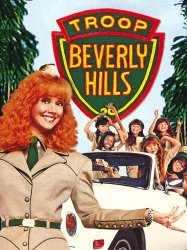
Troop Beverly Hills (1989)
, 1h43Directed by Jeff Kanew
Origin USA
Genres Comedy, Adventure
Actors Shelley Long, Craig T. Nelson, Betty Thomas, Mary Gross, Jenny Lewis, Stephanie Beacham
Roles Production Design
Rating58%





On the last day of school in 1988, Phyllis Nefler (Shelley Long) is a Beverly Hills wife recently separated from her husband, Freddy (Craig T. Nelson), a wealthy owner of an auto shop chain. Freddy feels Phyllis has become a self-absorbed "shopaholic" who never follows through on her commitments, and that she has drifted from the caring, imaginative personality that made him marry her. To prove him wrong, Phyllis decides to become the new den mother of their daughter, Hannah's (Jenny Lewis) unruly, leaderless local girl scout troop of Wilderness Girls. While Phyllis is boutique-hopping along Rodeo Drive, the council is overlooking her application, then approving it as they believe Phyllis has the makings of an excellent den leader. Although Phyllis severely lacks the skills found in most troop leaders, she resolves to teach the girls how to survive in "the wilds of Beverly Hills," even customizing new merit badges for her troop. One campout results in the troop getting hit by a rain squall, which Phyllis and the girls flee to the Beverly Hills Hotel. Despite her unorthodox ways, Phyllis demonstrates an unwavering commitment to the girls' well-being and acts as a surrogate mother/friend to the girls, who are often neglected by their own wealthy and distracted parents. However, during an award ceremony on a yacht, a woman gets knocked overboard and asks for a life saver and Phyllis responds which flavor. Fred remarks he was hoping to see Hannah learn a few outdoors and civil defense skills, such as first aid, and he is unsure about that under Phyllis' mentorship. Her unorthodox methods also run afoul of another scout leader, Velda Plendor (Betty Thomas), a mean-spirited, retired army nurse who runs her troop, the Culver City "Red Feathers" (of which her own daughter, Cleo (Dinah Lacey) is a member), like a military unit. Because Velda has considerable pull at the regional council level, she declares Phyllis' customized merit badges ineligible and sends her assistant troop leader, Annie Herman (Mary Gross), to infiltrate Troop Beverly Hills.

Dragnet (1987)
, 1h45Directed by Tom Mankiewicz
Origin USA
Genres Comedy, Comedy thriller, Action, Crime
Actors Tom Hanks, Dan Aykroyd, Christopher Plummer, Harry Morgan, Alexandra Paul, Jack O'Halloran
Roles Production Design
Rating60%





LAPD Sgt. Joe Friday's nephew and namesake (Aykroyd), whose anachronistic views reflect those of his late uncle, is involuntarily assigned a smart-alecky, streetwise new partner, Pep Streebek (Hanks). Their contrasting styles clash at first, Friday disapproving of his young partner's attitude, hair, and wardrobe, but they gradually bond over their first case as a team, an investigation of a series of bizarre thefts involving items as disparate as a tanker full of chemicals, police, fire and paramedic vehicles, a wedding dress, a wood tree bat, an anaconda, a lion's mane, and the entire monthly print run of Bait, the pornographic magazine owned by Jerry Caesar (Dabney Coleman).

Jumpin' Jack Flash (1986)
, 1h40Directed by Penny Marshall
Origin USA
Genres Thriller, Comedy, Action, Spy, Romance
Themes Spy films, Films about computing, Transport films, Road movies, Chase films, Gangster films
Actors Whoopi Goldberg, Jonathan Pryce, Stephen Collins, John Wood, Carol Kane, Annie Potts
Roles Production Design
Rating59%





Teresa "Terry" Doolittle (Whoopi Goldberg) transfers funds for the First National Bank in Manhattan, New York. She does not quite fit with the bank's corporate image, despite being a good employee and popular with her co-workers. She is often chastised by her no-nonsense boss James Page (Peter Michael Goetz).

Explorers (1985)
, 1h49Directed by Joe Dante
Origin USA
Genres Science fiction, Fantasy, Adventure, Romance, Comic science fiction
Themes L'adolescence, Films about education, Films about children, Space adventure films, Comedy science fiction films, Space opera, Children's films, Films about school violence
Actors Ethan Hawke, River Phoenix, James Cromwell, Amanda Peterson, Bobby Fite, Danny Nucci
Roles Production Design
Rating63%





Ben Crandall (Ethan Hawke) experiences vivid dreams about flying through clouds and over a vast, city-like circuit board...usually after falling asleep watching old sci-fi movies (War of the Worlds is a favorite). Every night, upon waking from the dream, he draws the circuit board. Ben shows the sketches to his friend Wolfgang Muller (River Phoenix), a child prodigy. At school, Ben develops a crush on Lori Swenson (Amanda Peterson) - but he isn't sure whether it's mutual. Both boys meet punkish-but-likeable Darren Woods (Jason Presson), with whom they share their circuit board-concepts. Wolfgang builds an actual microchip based on Ben's drawings. The chip enables the generation of an electromagnetic bubble which surrounds a pre-determined area. As the boys discover, said bubble is capable of moving at near-limitless distances and speeds without the usual ill-effects from inertia. They construct a rudimentary spacecraft out of an abandoned tilt-a-whirl seat; they name their ship the Thunder Road, after Bruce Springsteen's song of the same title. Their experiments with the Thunder Road draw attention from the US Government, which sends agents to scout the area for unidentified flying objects.

No Small Affair (1984)
, 1h42Directed by Jerry Schatzberg
Origin USA
Genres Drama, Comedy, Comedy-drama, Musical, Romance
Actors Jon Cryer, Demi Moore, George Wendt, Peter Frechette, Elizabeth Daily, Ann Wedgeworth
Roles Production Design
Rating55%





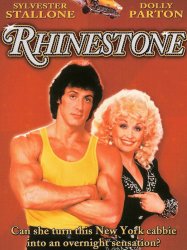
Rhinestone (1984)
, 1h52Directed by Bob Clark
Origin USA
Genres Comedy, Musical theatre, Musical
Themes Films about music and musicians, Musical films
Actors Sylvester Stallone, Dolly Parton, Richard Farnsworth, Ron Leibman, Tim Thomerson, Ritch Brinkley
Roles Production Design
Rating40%





Jake Farris (Dolly Parton), a country singer stuck in a long-term contract performing at a sleazy urban cowboy nightclub in New York City, boasts to the club's manager, Freddie (Ron Leibman), that she can make anybody into a country sensation, insisting that she can turn any normal guy into a country singer in just two weeks. Freddie accepts Jake's bet, putting up the remainder of Jake's contract (if she wins the bet, the contract becomes void; if she loses, another five years will be added). He then ups the ante: if Jake loses, she must also sleep with him. The problem is that Freddie can select the man, and he selects an obnoxious New York cabbie named Nick Martinelli (Sylvester Stallone). Nick not only has no musical talent whatsoever, he claims to hate country music "worse than liver". Realizing she is stuck with Nick, Jake takes him back to the hills of Tennessee for a two-week crash course in how to walk, talk, and sing like a genuine country star.
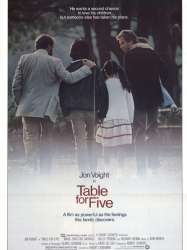
Table for Five (1983)
, 2h2Directed by Robert Lieberman
Origin USA
Genres Drama, Romance
Actors Jon Voight, Richard Crenna, Marie-Christine Barrault, Millie Perkins, Roxana Zal, Kevin Costner
Roles Production Design
Rating60%





J.P. Tannen (Voight) is a former professional golfer residing in California. He is estranged from his three children, who live in New York with their mother Kathleen (Millie Perkins) and stepfather, attorney Mitchell (Crenna). In an effort to re-enter their lives, Tannen decides to take them on a Mediterranean cruise. Tannen, who still has feelings for Kathleen, wants her to believe he's a changed man, but she's not convinced.

Staying Alive (1983)
, 1h36Directed by Sylvester Stallone
Origin USA
Genres Drama, Comedy-drama, Action, Musical, Romance
Themes Dance films, Films about music and musicians, Musical films
Actors John Travolta, Cynthia Rhodes, Finola Hughes, Julie Bovasso, Kurtwood Smith, Sarah Miles
Roles Production Design
Rating48%





Set some six years after the events of Saturday Night Fever, former disco king Anthony "Tony" Manero is now 25. He has left Brooklyn, and is now living in Manhattan, staying in a flophouse while he works as a dance instructor and as a waiter at a dance club, looking for his big break in the modern dance productions on Broadway. The breakaway he has from his Brooklyn life, family, and friends seems to have matured Tony and refined his personality, specifically represented by his diminished Brooklyn accent and his avoidance of alcohol and profanity. However, certain attitudes have not changed, as with his most recent girlfriend, the forgiving Jackie (Cynthia Rhodes). One attitude he holds consists of a double standard whereby he feels at liberty to see other women, but becomes vexed if he finds Jackie with other men.

Private Benjamin (1980)
, 1h49Directed by Howard Zieff
Origin USA
Genres Comedy, Comedy-drama
Themes Military humor in film, Political films
Actors Eileen Brennan, Armand Assante, Goldie Hawn, Craig T. Nelson, Robert Webber, Sam Wanamaker
Roles Production Design
Rating61%





Judy Benjamin (Goldie Hawn) a 28-year-old whose lifelong dream is to "marry a professional man", joins the U.S. Army after her new husband (Albert Brooks) dies on their wedding night during sex. Adrift, Benjamin realizes that she has never been independent in her entire life, and she meets a sneaky recruiting sergeant, Jim Ballard (Harry Dean Stanton), who leads her to believe military life will provide the "family" she seeks. He also tells her that the service is glamorous, comparing it to a spa vacation. She has a rude awakening upon arriving in boot camp. Judy wants to quit almost immediately, and is astonished to learn that she cannot, contrary to the assertions of her recruiting sergeant.

Winter Kills (1979)
, 1h37Directed by William Richert
Origin USA
Genres Drama, Thriller, Comedy, Comedy-drama
Themes Political films
Actors Jeff Bridges, John Huston, Anthony Perkins, Eli Wallach, Sterling Hayden, Dorothy Malone
Roles Production Design
Rating61%





Nick Kegan (Bridges) is the son of world-famous tycoon Pa Kegan (Huston) and the younger half-brother of the late President Timothy Kegan, who was slain by a lone sniper 19 years earlier. When an ex-convict named Arthur Fletcher (Joe Spinell) makes a deathbed confession to Nick, claiming that he was the second of two riflemen who shot the president and was sub-contracted by an unknown agency, Nick sets off on a quest to discover the truth about his late brother's murder.
 Connection
Connection
